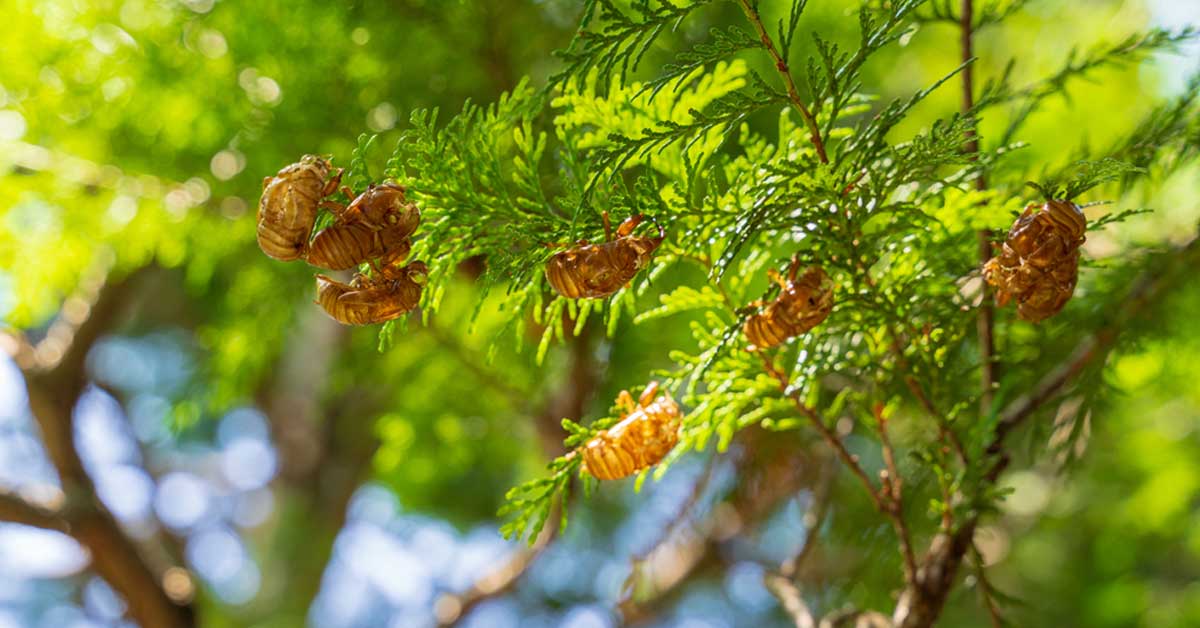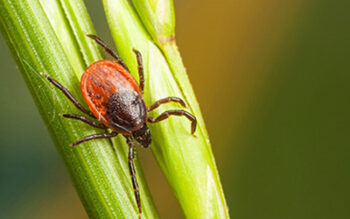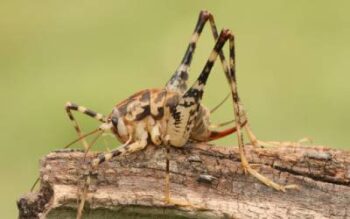
 Cicadas are back! Or will be soon. The timing depends upon when the ground becomes warm enough. This batch of cicadas will emerge by the billions in a dozen states ranging from New York to Illinois to Georgia.
Cicadas are back! Or will be soon. The timing depends upon when the ground becomes warm enough. This batch of cicadas will emerge by the billions in a dozen states ranging from New York to Illinois to Georgia.
North America has seven types of “periodical cicadas.” Of these types, four are 13-year cicadas and the other three species are 17-year cicadas. All three of the 17-year cicadas will emerge this year and, as a group, were dubbed “Brood X” in 1898 by Charles Lester Marlatt.
The last time Brood X – also known as the Great Eastern Brood – emerged was 2004. That was the year Ronald Regan died, the last episode of Friends aired, and the hottest movies included Spider-Man 2 and The Incredibles.
Why Does It Take 17 Years for Cicadas to Come Out?
More than 3,000 species of cicadas exist worldwide, the vast majority of which spend two to five years underground before emerging – with some appearing every summer as annual cicadas. Periodical cicadas (which stay underground longer and all emerge at once) are much more rare.
According to Chris Simon, a professor at the University of Connecticut and researcher of cicadas, glacial periods shifted the life cycle of the periodical cicada over a period of a few million years. Short growing seasons and survival instincts caused periodical cicadas to spend longer periods underground.
By emerging all at once as a giant group, more cicadas would be out at the same time than predators could eat. This “predator satiation” strategy means that at least some would survive to mate and start the cycle over again. If cicadas emerged in smaller groups, they could be wiped out.
Instead, the cicadas will find mates and implant their eggs in vines or branches. Once those eggs hatch, the nymphs (a.k.a. young cicadas) will burrow into the soil and stay underground, eating roots for years until they get the signal to emerge. The long period underground ensures that they all develop sufficiently for when they climb out of the dirt.
Can Cicadas Hurt You?
No, cicadas do not bite or sting, so they are harmless to humans. They make a loud noise that has been described as “an alien-like wail” but, other than that annoyance, they pose no danger to humans. In fact, some people like to eat cicadas as they are a good protein source.
Do Cicadas Carry Disease?
No, cicadas do not carry disease. Some can become infected by a fungus that spreads in a rather gross fashion from cicada to cicada but doesn’t directly affect humans. Scientists are studying the fungus, however, to see if it can be used productively.
Why Are Cicadas So Loud?
Male cicadas make noise to mark territory and attract mates. Periodical cicadas are louder than annual cicadas, possibly to deter predators, though the sheer volume when they emerge is also a factor.
Male cicadas make the noise by contracting and relaxing a tymbal muscle, which they do between 120 and 480 times a second, which makes it appear to be a continuous sound. Then their air sac amplifies the sound to create that familiar high-pitched buzzing.
How Long Can Cicadas Live?
Adult cicadas die off after about four to six weeks after emerging from the ground. Other than that, the cicada nymphs live underground for a period of time, based upon the type of cicada they are – two to five years if an annual cicada or for periodical cicadas 13 or 17 years.
Are Cicadas Beneficial?
According to nature experts, cicadas are very beneficial to the environment. When nymphs dig into the soil and then emerge years later, they aerate the soil.
By implanting their eggs into branches and vines, they prune plants when the eggs cause them to split, though if done to excess that can also weaken a plant. As a protein source, lots of animals eat cicadas. Dead cicadas provide nitrogen to fertilize the soil.
Are Cicadas and Locusts Related?
Cicadas and locusts are often confused but, biologically, they are not related to each other. Locusts are a member of the grasshopper family.
Cicadas are related to crickets, which are also confused with grasshoppers sometimes but are a different species. Locusts actually chew plants and, in large quantities, can devastate crops. Cicadas suck sap and fluid from plants instead.
Call Arrow for All of Your Pest Problems
Protect your home and belongings. Call us at Arrow Exterminating as soon as you suspect a pest problem of any kind. To get started, contact Arrow Exterminating today.





